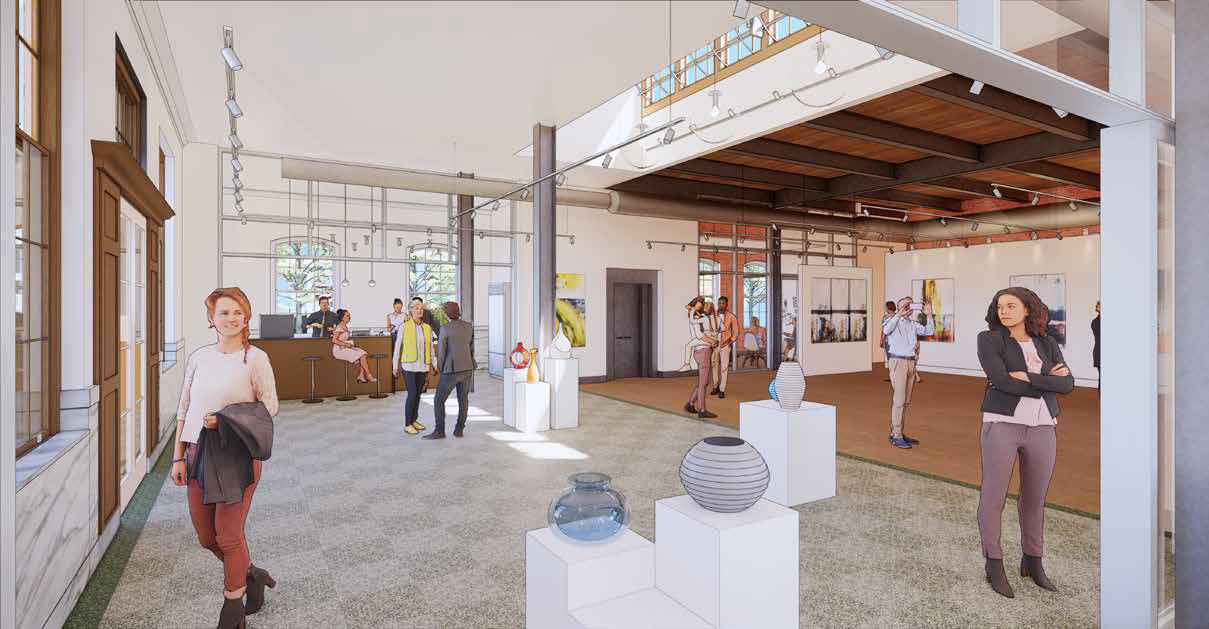Lacking deep pockets, arts groups and artists are often compelled to live something of a vagabond life, moving into suitable meeting and display spaces when they become available, moving again when their owner rents them out or otherwise needs them.
For groups like Valley Creative Arts and Auburn’s Striped Water Poets, that’s the way it’s been for always.
But not for much longer.
Parks, Arts and Recreation Director Daryl Faber and his crew said last week the Auburn Arts and Culture Center should open in the city’s historic post office this summer, bringing in its train art studios, galleries, classrooms and community meeting spaces.
“It’ll be summer, but it’s going to depend on all the supply chain issues that are going on,” Faber said. “We’ve got a really good contractor on site who’s working, but obviously you can only work as fast as the next item on the line. There are some glass walls that have to be fabricated. Just like with any project, you think you can get the supply in a month, and you find out it’s three months out or whatever it is, so we’re a little bit dependent on that, but we’re still hoping to be done by summer.”
The city bought the building – a US post office from 1939 until 1964, and later a King County Public Health site — from King County in 2019. And ever since, grant by grant, bit by bit, thanks to an arm in arm effort between Johnston Architects and the Parks, Arts and Recreation Department, work has progressed steadily.
”It’s going to add opportunity for increased access to the arts downtown, for gathering places for meetings, for introduction to art from other cultures like the Muckleshoots and all the other nations that are now in Auburn,” Faber said.
The first floor of will be dominated by gallery spaces and an artist-in-residence studio. A main-floor gift shop will serve as a revenue-generator while giving local artists an opportunity to promote and sell their work. A catering kitchen and/or café will strengthen the vision of the Auburn Arts Center as a community event space.
In a future phase, the renovated basement level will offer teaching spaces for community-based arts classes, performance rehearsal spaces and additional studios.
Transforming the fusty old post office into artistic space has taken time and everything the creative minds of Johnston Architects and the city could muster. Workers began by tearing our interior walls, bulky column wrap and suspended plaster ceiling to reveal high ceilings and allow natural light inside. Newly revealed raw structure merge with refined elements, like the building’s original terrazzo floors and plaster moldings.
Construction began in 2021.
Meanwhile, the center’s sister project, the Auburn Arts Alley, is moving ahead to transform the alley between the center and Auburn Avenue Theatre into a space for creativity, vibrancy, and cultural connectivity, replete with seating, public art, space for temporary or “rotating” art and performances in addition to elements inspired by a local artist in collaboration with the Muckleshoot Tribe.
Faber said the goal would be to have the alley done at the same time, but the city is holding off on that because the roof and windows on the arts and culture center that need attention will require workers to get into its landscape bed, and until that work is finished the zipping up of the adjacent alley will have to wait.
The project first made news in 2017 when the University of Washington chose the cities of Auburn and Tacoma to be part of its Livable Cities project. The city submitted three projects, but the one that caught the eye of landscape architect students Allison Ong, Sylvia Janicki, and Jack Alderman was that homely alley.
But their initial alleyway redesign plans generated cost estimates at over $500,000..
“The Livable Cities acted as sort of a launching pad for this vision to create creative and cultural energy in the arts and culture center and the alley next to it,” said Allison Hyde, Arts Program coordinator for Arts, Parks and Recreation.
The city submitted a successful application for a $20,000 grant via 4Culture’s Creative Consultancy program for the future Arts and Culture Center and the alleyway.
What came of that was a match between the city and local artist Kathleen Fruge Brown, who, in short order, submitted a formal proposal for grant consideration, suggested an undulating, curved, concrete wall with inlaid mosaics — a speciality of hers — and the stage earlier presented in the Livable Cities design.
Fruge Brown also worked with Willard Bill Jr., creative director for the Muckleshoot Tribe, and with local artist, weaver and teacher Gale White Eagle to incorporate her weavings and those of other Coast Salish basketry designs into the project.



